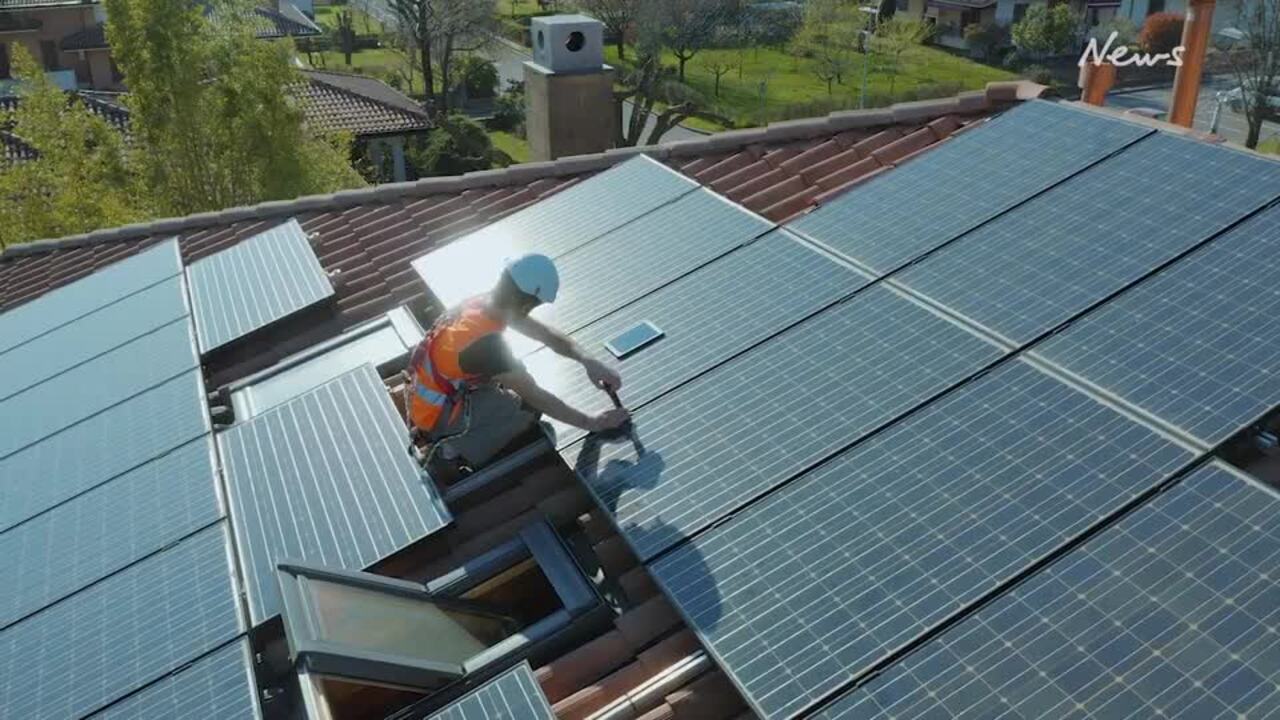Household electrification means more jobs down under
Net zero sparks jobs boom that will help Aussies tackle a rapidly warming climate, explains Dr Christa Pudmenzky, host of Ipswich's Changing Climates series.

Hyperlocal
Don't miss out on the headlines from Hyperlocal. Followed categories will be added to My News.
Australia is at the forefront of a renewable energy revolution.
And around a third of us have seen this change take place on our very own rooftops through the mass installation of solar panels.
Not only is this making our homes cleaner and greener, it's also paving the way for thousands of new employment opportunities across the country.
Many of these jobs will be created through the process of 'household electrification', which involves swapping out fossil fuel-guzzling gas appliances for electric ones that can be powered by renewables.
So, let's dig a little deeper into the jobs on offer.
Jobs and growth
Monash University's 2023 'Switching On' report predicts around 13,500 new jobs could be created through the electrification of Aussie homes over 10 years.
A booming solar and battery installation industry is a primary catalyst.
In 2018-19 there was a national rooftop solar workforce of over 13,000 – a number that has since grown to around 18,500 full-time workers.
And, although we've already installed 20GW of solar on Aussie rooftops, there is room for plenty more.
In fact, the Clean Energy Finance Corporation estimates a further 179GW could be installed on Australia's rooftops – over 50 times the amount installed in 2021.
The residential battery storage sector – which allows excess energy to be captured and used later – is experiencing even faster growth, with a 55 per cent increase in installations in 2022.

We also require workers to swap out gas appliances for energy-efficient electric ones.
This will be no easy feat with over 13 million gas appliances needing to be replaced to fully electrify our homes.
Of course, these jobs will not be shared equally between states and territories, primarily because residential gas consumption varies significantly across the country.
For example, Victorian homes are full of gas appliances, and currently consume almost twice as much gas as all other households in Australia combined.
This means even more workers are needed to help electrify homes across the state.
If we zoom in on Queensland, we can see around 1400 full-time jobs could become available over the next decade.

Short-staffed
Despite all these job opportunities, Australia doesn't currently have a sufficiently large, trained workforce fit for the task.
The National Skills Commission priority list reveals national shortages of plumbers, electricians, electrical engineers, trades workers and technicians, with some of these occupations having up to 50 per cent vacancy rates.
This gap could be filled through local and national policy changes, as well as training opportunities that focus on building workforce capacity while taking into account global competition for similar roles.
There are early signs of governments taking action, with last year's announcement of a national Net Zero Authority that will, among other things, provide support to workers and communities as we reduce our emissions.
A variety of initiatives have also emerged at the state level, including the $16 million Energising Tasmania Training Fund, Queensland's $90 million investment in two SuperGrid Training Centre and Transmission Hubs, and Victoria's $220.5 million investment in trade and electrical skills announced in the 2023 state budget.
The training should focus on equipping new workers with the skills they need for jobs in household electrification.
At the same time, educational institutions and industries are encouraged to collaborate to build clear pathways for newly trained workers to enter employment.
Reskilling and upskilling those who are making the transition from traditional energy sectors to renewables should also be a priority.
Most importantly, governments and schools can inspire the next generation of clean, green workers by promoting apprenticeships and traineeships as attractive and worthwhile career opportunities.
Residential electrification will help us enjoy energy efficient, comfortable homes as we face the challenges of a warming climate.
While it provides a suite of exciting job opportunities across the country, governments, industries and educators should work together to ensure we build the pipeline of workers we need for an electrified future.
Hear from your community:

nan
Dr Christa Pudmenzky is a climate scientist at the University of Southern Queensland.
This column is part of a collaboration between Monash University and News Corp to deliver hyperlocal weather and climate information.


